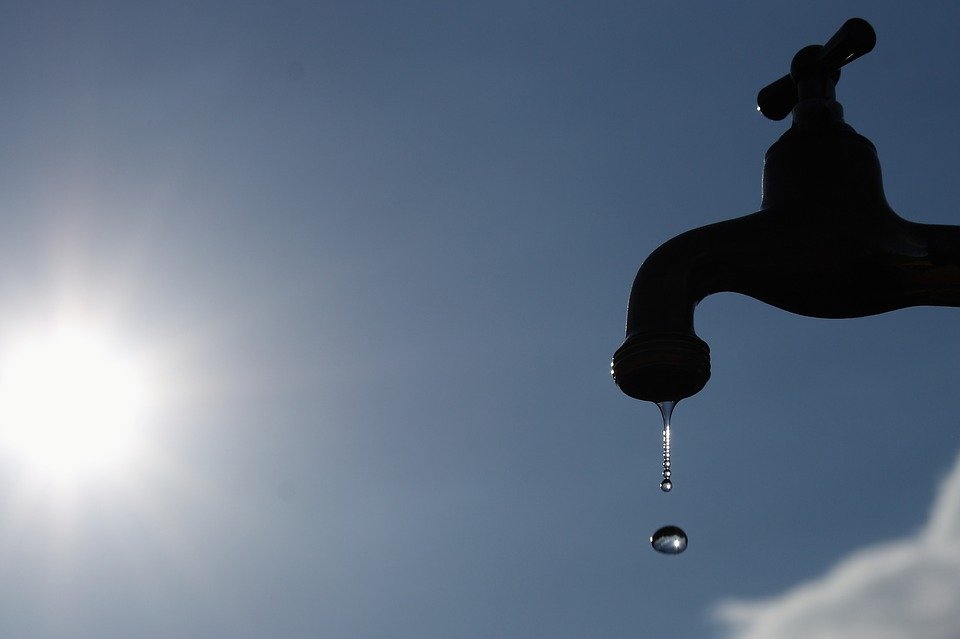Monday 26 November 2018 could be the day Makhanda’s (Grahamstown’s) water shortage hits home, unless Makana Municipality and residents take drastic action to secure the supply and reduce consumption.
The Department of Water and Sanitation Friday 29 June confirmed that the available supply dam for the west part of the city, Howieson’s Poort, had 43 days of water left. The main dam serving west Makhanda (Grahamstown), Settlers, could supply enough water for a further 102 days, provided the pumps there remain operational, and depending until what level of depletion they can continue to work. Meanwhile, the city is currently unable to meet the existing demand on the bigger backup supply from the James Kleynhans Water Treatment Works.
Department of Water and Sanitation national spokesperson Sputnik Ratau replied in the early hours of last Friday to questions from Grocott’s Mail. His emailed response, along with other information, confirmed the concern of local civic organisation, the GRA, that unless Makana Municipality and residents take immediate action, the city could face frequent, long and extensive water disruptions before the end of the year.
Makana’s recent serious water quality problems (e.coli contamination and high turbidity) are in the process of being resolved. But serious concerns about quantity red-flagged by the Grahamstown Residents Association (GRA) have been confirmed.
GRA Secretary Tim Bull, who has monitored dam levels over a period of around 18 months, last week estimated that the 57% level of Howieson’s Poort then translated to 47 days of available water for pumping. His estimate was that if water could be pumped from Settlers Dam, which DWS confirms is at 30%, this would ensure a further 140 days’ supply.
This estimate of available water was last Friday confirmed by DWS.
“Yes, at the current abstraction rate and without further inflows that is possible,” Ratau said. “This is why water conservation and water demand management are critical.”
Ratau said, however, that the installation of a floating intake at Settlers Dam to allow for abstraction of water below the surface would be done only as a last resort. A July 2017 report from dive company Black Water Divers in July 2017 warned that pumping when the dam level is too low could risk damage to the pumps.
“The use of floating intake is only used to abstract water from the ‘dead storage’, i.e. water that is below the abstraction level,” Ratau said.
Regarding plans to ensure that the remaining water in Settler Dam is available for use, Ratau said, “The Technical Director of the Municipality must ensure that the water abstractions are managed.”
Infrastructure and Technical Services Director Dali Mlenzana yesterday told Grocott’s Mail that both pumps at Settlers Dam are now in use. This follows a long period of disuse because of technical problems.
The upgrades that will eventually supply 20ML a day to east Grahamstown are at least a year away from completion. Meanwhile, the city is currently unable to meet the existing 13ML a day demand on water from the James Kleynhans Water Treatment Works, which is designed to treat 10 megalitres a day.
Ratau confirmed that the water supply to east Grahamstown will continue to be closed off overnight for some months while upgrades and maintenance continue at James Kleynhans (to allow reservoirs to refill, which empty quickly due to high demand).
“Should a serious incident occur on either side, the water will have to be shared until the incident is resolved,” Ratau said.
Level 5 water restrictions are still in force in Grahamstown, which allow 60 litres per individual in a household per day.
Some facts and estimates about our dams
* The city’s current rate of use is 7 megalitres a day from Waainek Water Treatment Works and 10ML from James Kleynhans (figures cited by Makana Municipality).
* The capacity of the western dams as recorded by DWS is Howieson’s Poort 883 000 cubic metres; Settlers 5620 thousand cubic metres. Glen Melville on the east’s Ecca catchment supply is heavily supplemented by a so-far secure feed from Gariep Dam via the Orange/Fish River tunnel so its capacity of 6230 thousand cubic metres is not currently relevant;
* Howieson’s Poort last Friday when confirmed by DWS was at 57% of capacity and Settlers 30%.
* Cumulative daily measurements taken at Howieson’s Poort indicate a rate of depletion of 1% a day (GRA’s estimates made two weeks ago were based on percentage volumes: “7ML per day equals approximately 1% per day for Howieson’s Poort dam and Settlers is about seven times the size of HP. So a 1% drop in Settlers equals about seven days’ supply at 7ML per day.”)



